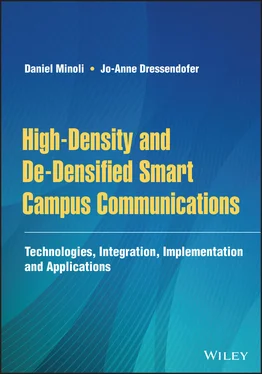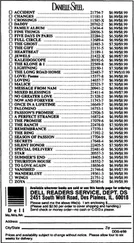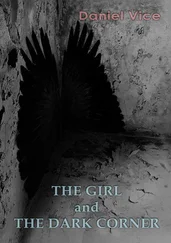
FIGURE 2.6 Carrier Sense Multiple Access/Collision Avoidance‐based frame transmission procedure.
When the third station STA3 receives the RTS frame, it may set a Network Allocation Vector (NAV) timer of the third station, STA3 for a transmission duration of subsequently transmitted frames (for example, a duration of SIFS+CTS frame duration+SIFS+data frame duration+SIFS+ACK frame duration) using duration information included in the RTS frame. When the third station STA3 receives the CTS frame, it may set the NAV timer of the third station STA3 for a transmission duration of subsequently transmitted frames using duration information included in the CTS frame. Upon receiving a new frame before the NAV timer expires, the third station STA3 may update the NAV timer of the third station STA3 by using duration information included in the new frame. The third station STA3 does not attempt to access the channel until the NAV timer expires. When STA1 receives the CTS frame from the second station STA2, it may transmit a data frame to the second station STA2 after SIFS elapses from a time when the CTS frame has been completely received. Upon successfully receiving the data frame, the second station STA2 may transmit an ACK frame as a response of the data frame after SIFS elapses. When the NAV timer expires, the third station STA3 may determine whether the channel is busy using carrier sensing. Upon determining that the channel is not used by other devices during a DIFS after the NAV timer has expired, the third station STA3 may attempt to access the channel after a CW according to a backoff process elapses [2].
When Dual‐CTS is enabled, a station that has obtained a transmission opportunity (TXOP) and that has no data to transmit may transmit a CF‐End frame to cut short the TXOP. An AP receiving a CF‐End frame having a BSSID of the AP as a destination address may respond by transmitting two more CF‐End frames: a first CF‐End frame using STBC and a second CF‐End frame using non‐STBC. A station receiving a CF‐End frame resets its NAV timer to 0 at the end of the PPDU containing the CF‐End frame.
Figure 2.6also shows the second station STA2 transmitting an ACK frame to acknowledge the successful reception of a frame by the recipient.
Figure 2.2, called out above, further illustrates components of a wireless device configured to transmit data, including a Transmission (Tx) Signal Processing Unit (TxSP), an RF transceiver, an antenna unit, and four illustrative antennas. The TxSP, RF transmitter, and antenna unit may be components of the transmitting signal processing unit, RF transmitter, and antenna unit of the WLAN device. Each spatial stream needs its own dedicated transmit/receive chain; for example, 802.11ac 8 × 8 AP capable of supporting all eight spatial streams needs eight independent radio chains and antennas.
The RF transceiver includes an RF transmitter and an RF receiver. The RF transceiver is configured to transmit information received from the baseband processor to the WLAN, and provide information received from the WLAN to the baseband processor. The antenna unit includes one or more antennas; when MIMO or MU‐MIMO is used, the antenna unit may include a plurality of antennas [2].
The TxSP includes a stream encoder; a stream parser; first and second interleavers; first and second mappers; a diversity encoder; a spatial mapper; in this example, a first to fourth inverse Fourier Transformers (iFTs), and in this example, a first to fourth Guard Interval (GI) inserters.
The stream encoder receives and encodes data. The stream encoder includes a Forward Error Correction (FEC) encoder. The FEC encoder may include a Binary Convolutional Code (BCC) encoder, a Low‐Density Parity‐Check (LDPC) encoder, or one or more combinations thereof. There are two types of coding, Convolutional Coding (CC) and Block Coding (BC). CC is state machine‐based, while BC is an algebra‐based approach. In WLAN, BCC has been the mandatory coding method. In terms of performance, LDPC is better than BCC, but complexity is much higher. LDPC is used from 11ax onward. See Table 2.4, loosely based on reference [17].
TABLE 2.4 Basic Error Coding Schemes
| Type |
Approach |
Method |
Timeframe |
Application |
Feature |
| Convolutional |
State Machine |
BCC Viterbi |
I960 |
WLAN (11a/g) |
Simple and widely used |
| Turbo |
1993 |
3G, 4G |
Iterative decoder (close to Shannon limit) |
| Block Code |
Algebra |
Hamming |
19S0 |
Computer memory |
Simple Detect up to 2 simultaneous bit error and can correct 1 bit |
| Reed‐Solomon |
1960 |
CD/MP3, Satellite, DVB |
Widely used in digital storage and communication |
| LDPC |
1962/1996 |
WLAN(11n~) 5G NR |
Low density and complexity |
| Polar |
2009 |
5G NR |
|
The stream parser is configured to divide outputs of the encoder into one or more spatial streams. The stream parser may allocate consecutive blocks of bits to the one or more spatial streams in a round robin fashion. The blocks of bits typically have a length according to number of bits on an axis of a constellation point of a modulation and coding scheme, such as the length being 2 bits for 16‐QAM, 3 bits for 64‐QAM, 4 bits for 256‐QAM [2]. The respective bits of the first and second spatial streams are interleaved by first and second interleavers when BCC encoding is used.
The first and second mappers map the sequence of bits of the first and second spatial stream to first and second sequences of constellation points, respectively. A constellation point may include a (mathematical) complex number representing an amplitude and a phase. Within each of the first and second sequences of constellation points, the constellation points are divided into groups. Each group of constellation points corresponds to an OFDM symbol to be transmitted, and each constellation points in a group correspond to a different subcarrier in the corresponding OFDM symbol [2]. The diversity encoder is configured to spread the constellation points from the spatial streams into a plurality of space–time streams in order to provide diversity gain.
In Figure 2.2, the diversity encoder is shown mapping two spatial streams into four space–time streams (the Number of Spatial Streams N SSis equal to 2 and the Number of Space–Time Streams [STS] N STSis equal to 4). Each space–time‐stream corresponds to a different transmitting antenna or a different beam of a beamformed antenna array. The diversity encoder spreads each input constellation point output by the mappers onto first and second output constellation points. The first output constellation point is included in a first space–time stream and the second output constellation point is included in a second space–time stream, different from the first space–time stream. The first output constellation point has a value corresponding to a value of the input constellation point, and the second output constellation point has a value corresponding to a complex conjugate of the value of the input constellation point or to a negative of the complex conjugate (i.e. a negative complex conjugate) [2]. The first output constellation point is at a different time slot (that is, in a different OFDM symbol period) than the second output constellation point when Space–Time Block Coding (STBC) is used. The first output constellation point is at a different frequency (that is, transmitted using a different subcarrier) than the second output constellation point when Space‐Frequency Block Coding (SFBC) is used.
Читать дальше













